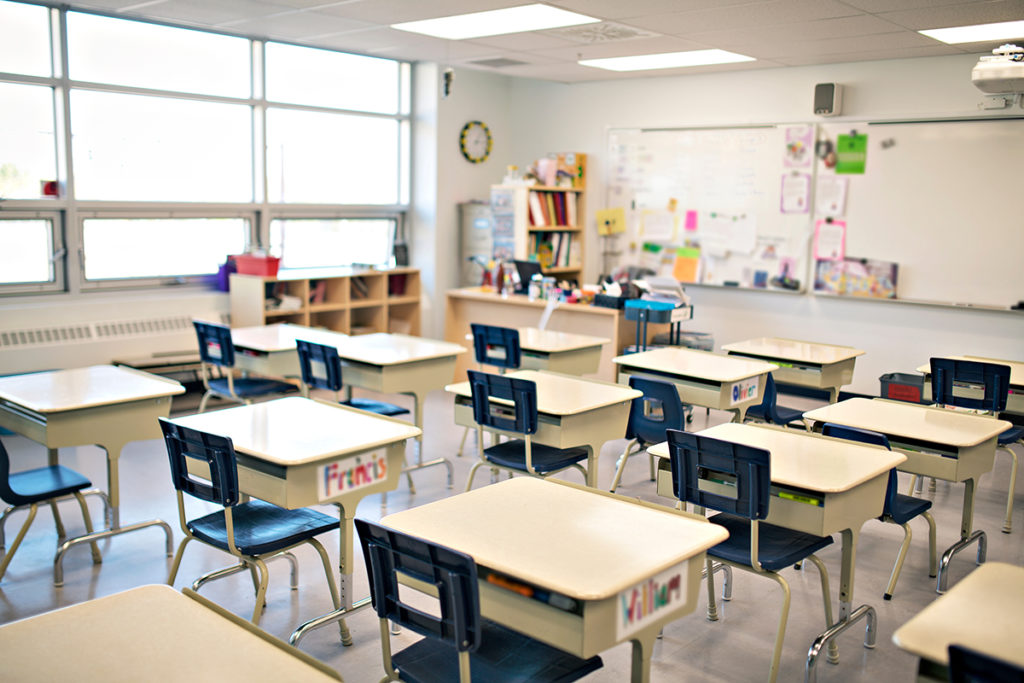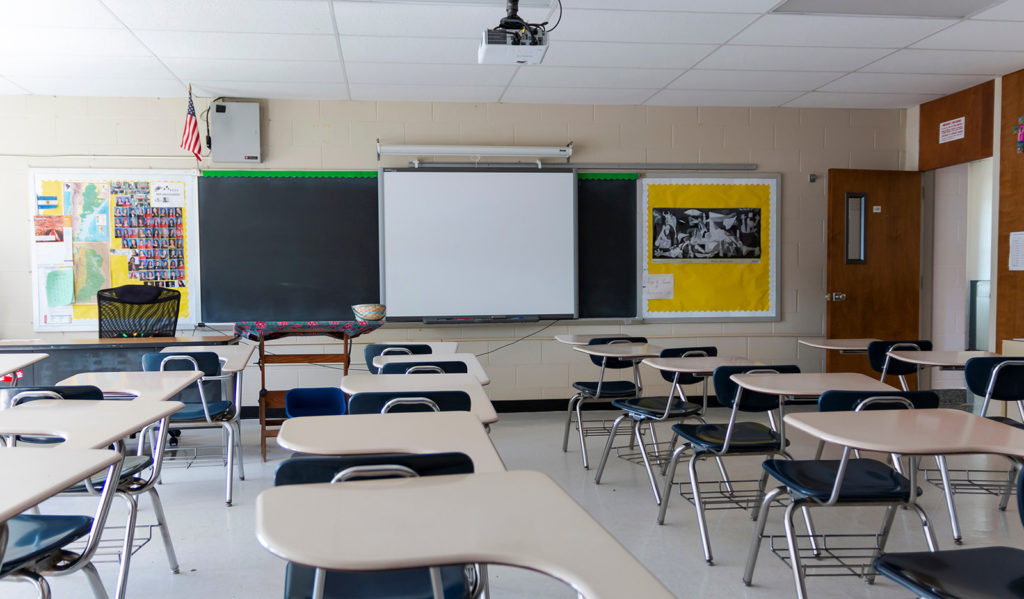
Along with marking the first full year of in-person instruction in the age of COVID-19, the 2021-22 school year saw the return of universal statewide testing.
As expected, assessment results released Monday by the California Department of Education revealed the academic impacts of pandemic-era disruptions, underscoring the need for ongoing accelerated learning and support. Yet they also showed that Orange County students are continuing to outperform their peers across California.
Among this year’s test-takers, a group that includes about 2.9 million students in grades three through eight and 11, Orange County scored consistently higher in English language arts, mathematics and science than the rest of the state. Local scores also topped the neighboring counties of San Diego, Los Angeles, Santa Barbara, Ventura, Riverside and San Bernardino in every grade level.

Smarter Balanced exams taken last spring are part of the statewide accountability system known as the California Assessment of Student Performance and Progress, or CAASPP, and they’re designed to measure student mastery of content standards. They’re also used to identify and address gaps in knowledge or skills that may require more targeted interventions.
In Orange County, 57 percent of students scored proficient or better in English on the latest Smarter Balanced tests, while 45 percent met that same threshold in math. That represents a decrease of 2 percentage points in English and 5 percentage points in math from the pre-pandemic days of 2019. By comparison, California’s rate in 2022 was 47 percent for English and 33 percent for math, down from 51 percent and 40 percent in 2019.
At both the state and county levels, gaps persisted among student subgroups. For example, English learners in Orange County produced proficient-or-better rates of 16 percent in English and 14 percent in math, which exceeded state averages. But those who were recently reclassified as Fluent English Proficient actually had higher rates than the county as a whole, at 67 percent for English and 47 percent for math.
On science assessments, 40 percent of Orange County students cleared the proficiency bar, including 63 percent of 10th-graders. Statewide, the comparable rate for all grades was 29 percent.
A snapshot of last spring
Both the county and statewide data represent a rear-view snapshot of last spring on the heels of an Omicron variant spike that resulted in unprecedented absences — impacting both students and staff. Since then, schools, districts and county offices throughout California have been able to analyze more recent assessment and survey data to inform local decision-making.

“It’s been widely anticipated that this year’s student assessment scores would reflect the global upheaval of the COVID-19 era,” Orange County Superintendent Dr. Al Mijares said. “Yet I am extremely proud of our county’s schools and districts, which, in addition to being among the first in the state to reopen for in-person learning, have remained laser-focused on quality teaching and learning while modeling the resilience we strive to instill in our students.”
“In the face of extraordinary challenges,” Mijares said, “Orange County’s educators swiftly embraced targeted interventions, accelerated learning and other supports that are essential to our students’ long-term success.”
Some of those supports have been made possible by an influx of federal and state funding, including dollars tied to the Learning Recovery Block Grant available to schools in this year’s state budget and California’s Expanded Learning Opportunities Program. The latter allocated more than $4 billion to school districts for after-school and summer enrichment from transitional kindergarten through sixth grade, with the goal of increasing social-emotional support and lowering pandemic-related stress.
Along with augmented counseling, music and other offerings, some local districts have used this funding to extend their school days.
“Expanded learning is working to support Orange County students by increasing access to safe places before and after school and on non-school days,” said OCDE Administrator Holly Steele, whose role includes overseeing Expanded Learning Teams and STEM. “These programs ensure that students are connected to additional caring adults who provide academic and social-emotional learning supports, as well as access to enrichment learning opportunities.”
Enhancing the school experience
The Anaheim Elementary School District used its share of expanded learning funds to lengthen the school day to nine hours at its two dozen campuses. In Santa Ana Unified, the district’s “Engage 360” program plans to hire hundreds of new staff members to help provide free after-school programs and services to students who apply at each of its 56 campuses.
“Not only do these opportunities build upon the school day experience, they also provide students with unique opportunities to strengthen their own youth voice and leadership skills,” Steele said.
Long before the pandemic, OCDE sought to improve the mental and physical health and wellbeing of students through training and technical assistance based on California’s Multi-Tiered System of Support.
MTSS is a framework that bundles new and existing strategies to address academic, behavioral and social-emotional needs. At an MTSS school, for example, staff members frequently collaborate and review data to establish a universal tier of support for all students, additional assistance for some and targeted interventions for those with the greatest needs.
In 2016, OCDE was tasked with leading the statewide implementation of MTSS, which has since been credited with a number of positive student outcomes.
Trish Walsh, OCDE’s administrator of humanities, said her staff has been focused on strategies aligned with MTSS to help teachers and students re-engage with learning. That includes working with local districts to update instructional materials and providing coaching based on rigorous teaching approaches and multiple means of learning.
“Every team’s work is centered on identifying best instructional practices aligned to the content area frameworks and standards, including literacy across the curricular areas,” she said.
Walsh says foundational skills for English-language arts and literacy are emphasized, with special attention paid to students who are designated as English learners. There’s also a focus on expository reading and writing to prepare students for higher education and their future workplaces. Other target areas include reading primary sources and media literacy.
Hopeful signs of recovery
“These baseline data underscore what many of us know: that the road to recovery is long and our students will need sustained support over many years,” State Superintendent of Public Instruction Tony Thurmond said in a news release.
Thurmond added that the state has worked proactively to make sure additional resources are in place to help students beyond 2024, when federal relief funding expires.
“Through the $7.9 billion Learning Recovery Block Grant available to schools in this year’s state budget, $4 billion in the Expanded Learning Opportunities Program, and $250 million for literacy coaches for our most vulnerable students, the CDE will continue to work with schools so they identify the right tools and resources to address academic, behavioral and mental health needs,” the superintendent said.
Meanwhile, state education officials identified some bright spots in the data that suggest learning recovery may already be underway.
While all testing requirements were waived in 2020, limited testing did occur the following year. In fact, about 25 percent of students in grades three through eight and 11 took the Smarter Balanced Summative Assessments for English and math in the spring of 2021. A closer examination of that specific group’s scores over the last two years indicates higher-than-normal achievement gains in most grade levels, according to the CDE.
“Now is not the time to take our foot off the accelerator when it comes to doing everything we can to help all our students progress toward mastery of our learning standards and thrive in every way in school,” California State Board of Education President Linda Darling-Hammond said. “California’s investments in important initiatives such as high-dose tutoring, professional development for teachers, and expanded learning time, and in such areas as mental health and wellness, are critical to lifting up academic performance across the board while supporting students’ well-being.”
For more information on the California Assessment of Student Performance and Progress System, visit the CAASPP webpage on the California Department of Education’s website.
